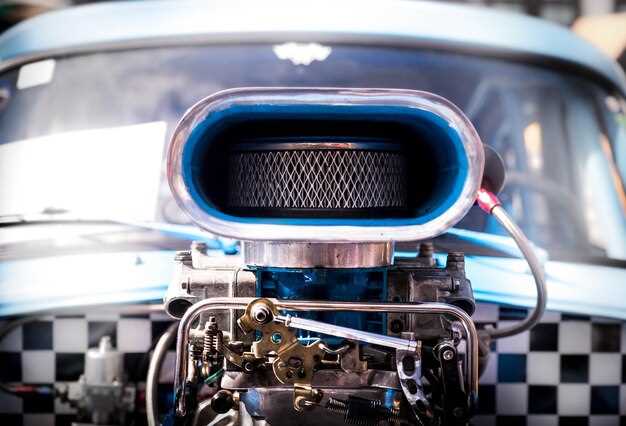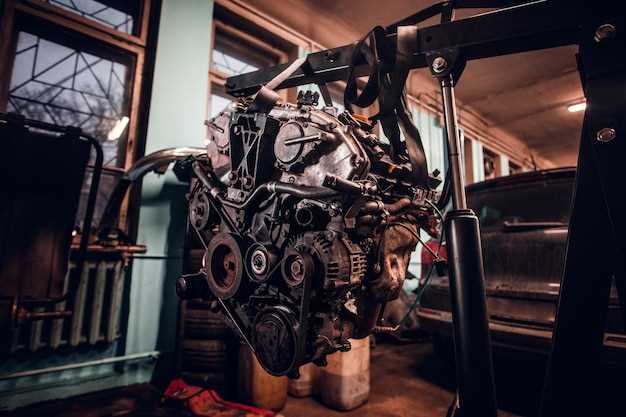
When it comes to tuning vintage vehicles, few modifications yield as significant an impact on both performance and aesthetics as upgrading the exhaust system. A high-performance exhaust not only enhances the engine’s efficiency but also delivers a more aggressive and memorable sound that resonates with enthusiasts. In this article, we will explore the top vintage performance exhaust systems available on the market, examining their features, benefits, and performance metrics to help you make an informed choice for your classic ride.
The right exhaust system can transform an ordinary driving experience into an extraordinary one. By reducing backpressure, optimizing exhaust flow, and improving engine breathing, vintage performance exhaust systems play a crucial role in maximizing horsepower and torque. Whether you’re restoring a classic muscle car or simply wish to elevate the performance of your vintage cruiser, selecting the proper exhaust system is paramount to achieving the desired results.
We will review a curated selection of the best exhaust systems designed specifically for vintage vehicles, taking into account factors such as sound quality, material durability, and ease of installation. As we dive into these options, you’ll discover how the right exhaust system can not only enhance the performance of your vintage automobile but also pay homage to its rich history and character.
Key Features of the Best Exhaust Systems for Vintage Cars
When considering the best exhaust systems for vintage cars, several critical features must be evaluated to ensure optimal performance and aesthetics. A well-designed exhaust system not only enhances the sound but also significantly improves engine performance. Here are the key aspects to focus on:
Material Quality: The durability of an exhaust system is largely influenced by the materials used in its construction. For vintage cars, top-tier systems are often crafted from stainless steel or aluminized steel, providing resistance against corrosion and wear. Stainless steel options are particularly favored for their longevity and ability to withstand high temperatures.
Tuning Potential: Effective tuning is vital for achieving the desired sound and performance levels. The best exhaust systems come with options for adjustments, allowing enthusiasts to modify the setup according to their vehicle’s specific requirements. This could involve variable mufflers or adjustable pipes that cater to different driving styles and performance needs.
Design and Fitment: A high-quality exhaust system should be designed to fit seamlessly with the vintage car’s architecture. Custom fitment ensures that the system aligns perfectly with the vehicle’s chassis and minimizes exhaust leaks, enhancing overall efficiency. Look for systems that have been specifically engineered for your vintage model.
Sound Quality: The auditory experience of a vintage car is one of its most appealing characteristics. Quality exhaust systems produce a rich sound that enhances the driving experience without being overly aggressive. Consider systems that provide a deep, throaty growl at lower RPMs, while still remaining refined at cruising speeds.
Performance Enhancement: One of the primary functions of an exhaust system is to improve engine performance. The best systems are designed to facilitate better exhaust flow, reducing backpressure and aiding in optimal engine tuning. Look for features such as mandrel bends and larger diameter pipes, which contribute to enhanced horsepower and torque.
Compliance with Regulations: Vintage cars often attract attention from collectors and regulators alike. The best exhaust systems adhere to local emission standards while still providing the performance benefits sought by enthusiasts. Ensure that the chosen system meets necessary legal requirements to avoid any complications.
By focusing on these key features, vintage car owners can make informed decisions when selecting exhaust systems that not only meet performance expectations but also enhance the overall aesthetic and auditory appeal of their cherished vehicles.
How to Choose the Right Exhaust System for Your Classic Vehicle

Choosing the right exhaust system for your classic vehicle is a crucial step in enhancing both performance and sound. Consider the following factors to ensure you make an informed decision:
- Vehicle Specifications: Understand your classic vehicle’s make, model, and engine specifications. This information is vital in selecting a compatible exhaust system.
- Performance Goals: Determine your performance objectives. Are you aiming for improved horsepower, torque, or simply a more aggressive sound? Your goals will guide your choice.
- Material Quality: Exhaust systems are commonly made from stainless steel, aluminized steel, or mild steel. Stainless steel offers durability and corrosion resistance, while aluminized steel is more budget-friendly but may have a shorter lifespan.
- Exhaust Type: Options include cat-back, axle-back, and header-back exhaust systems. Each type affects performance and tuning differently, so choose one that aligns with your performance goals.
- Sound Preference: The tonal quality of an exhaust system can significantly impact your driving experience. Listen to sound clips or visit local car meets to find a sound profile that suits your taste.
- Legal Regulations: Be aware of local emission laws and noise regulations. Some aftermarket systems may not be street-legal, depending on your area.
- Installation: Decide whether you will install the system yourself or hire a professional. Some kits are easier to install than others, which can affect your decision based on your mechanical experience.
By carefully considering these aspects, you can select an exhaust system that not only enhances the performance and tuning of your classic vehicle but also reflects your personal style and preferences.
Installation Tips for Upgrading Your Vintage Exhaust System

Upgrading your vintage exhaust system can significantly enhance your vehicle’s performance and sound. However, a successful installation requires careful planning and attention to detail. Here are essential tips to consider for a smooth installation process.
First, ensure you have all the necessary tools and components before starting. Common tools include wrenches, sockets, a jack, and jack stands. It’s also crucial to have high-quality exhaust gaskets and clamps, as these can prevent leaks and ensure a tight fit.
Before removing the old exhaust system, perform a thorough inspection of the current components. Identify any rust or damage that may affect the installation of the new system. Carefully document the existing layout and connections; this can serve as a reference when installing your upgraded system.
When it comes to tuning your engine for optimal performance, consider adjusting the exhaust system’s backpressure. A system designed for performance may reduce backpressure, which can enhance horsepower but might affect torque. Seek advice from experts or consult tuning resources to find the right balance for your specific engine configuration.
As you install the new exhaust system, start from the front and work your way to the rear. Ensure that each section is securely connected and that hangers are properly positioned to minimize vibrations. Take care to align the exhaust exits with the body of the car to avoid any misalignment issues that may arise.
After the installation, check all connections for leaks by starting the engine and listening for unusual sounds. A leak can indicate improper sealing or a loose connection. If necessary, retighten the clamps and ensure all gaskets are seated correctly.
Finally, perform a test drive to evaluate the overall performance and sound of your new exhaust system. Pay attention to any changes in engine behavior, and consider further tuning adjustments if needed. With these tips, your vintage exhaust upgrade will not only improve aesthetics but also optimize performance.


